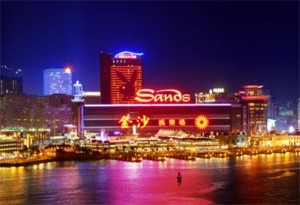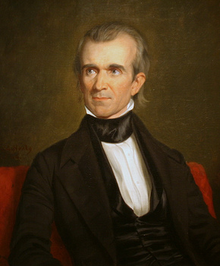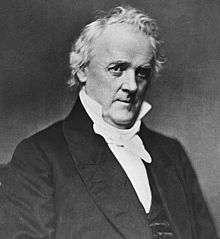The boulder that is Mark Davis‘ and Sheldon Adelson‘s attempt to move the [your city here] Raiders to Las Vegas is gaining momentum as it rumbles downhill. The growing  support among NFL owners is not unconditional. Sin City would be one of the league’s smallest markets and Philadelphia Eagles owner Jeffrey Lurie says Vegas “has to support 70,000 every weekend.” His analogy was the NBA‘s Thunder in Oklahoma City, “which does an incredible job of supporting their smaller market.” Others cited the iffy status of the $750 million that Adelson expects to wring from the Las Vegas Convention & Visitors Authority budget and the nascent status of Davis’ market-viability study (a process that is expected to take two months). New York Giants owner John Mara pronounced himself “open-minded,” while Houston Texans boss Bob McNair “would look favorably at it … you have gambling all around you now, lotteries on every street corner. I don’t think it is the issue we viewed it to be 20 years ago.”
support among NFL owners is not unconditional. Sin City would be one of the league’s smallest markets and Philadelphia Eagles owner Jeffrey Lurie says Vegas “has to support 70,000 every weekend.” His analogy was the NBA‘s Thunder in Oklahoma City, “which does an incredible job of supporting their smaller market.” Others cited the iffy status of the $750 million that Adelson expects to wring from the Las Vegas Convention & Visitors Authority budget and the nascent status of Davis’ market-viability study (a process that is expected to take two months). New York Giants owner John Mara pronounced himself “open-minded,” while Houston Texans boss Bob McNair “would look favorably at it … you have gambling all around you now, lotteries on every street corner. I don’t think it is the issue we viewed it to be 20 years ago.”
San Francisco 49ers owner Jed York took a wait-and-see attitude, while noting that “the stigma about Las Vegas is much different today than where it was in the past.” Davis’ biggest booster was the New York Jets‘ Woody Johnson, who said, “Las Vegas is a very exciting market. Nevada is a very good place from a tax standpoint, very low taxes and no income tax,” adding that he didn’t think gambling “is as dominant an issue now as it was 10 years ago.” OK, so the Raiders in Vegas are far from a done deal, but in terms of winning the hearts and minds of his fellow owners, Davis is on a roll.
Alarmist Mike Florio, meanwhile, frets that the league won’t be able to muster the nine “no” votes that would keep the Raiders from moving to the Las Vegas Strip. While his sources think that Mara will ultimately come down against it, along with George McCaskey of the Chicago Bears and Mike Brown of those perpetual also-rans, the Cincinnati Bengals. While Pittsburgh Steelers owner Art Rooney might also be opposed, he has to walk a tightrope, as other Rooney family members “previously had extensive gambling interests.” Even Florio seems to be coming around, writing that “the league has no choice but to ‘evolve’ on a topic that became full evolved in the American consciousness years ago.”
 * Macao very nearly undershot the bottom end of Wall Street‘s consensus for May, its casinos reporting a 10% revenue decline. JP Morgan analyst Joseph Greff cited the new ban on proxy (i.e., telephone) betting, which he thought accounted for 5% of gross gaming revenue. He predicted similar results for June and advised buying U.S.-centric casino stocks like MGM Resorts International. Over at Deutsche Bank, Carlo Santarelli noted that May was 6% better than April, bolstering the argument that Macao is slowly coming out of its deep trough.
* Macao very nearly undershot the bottom end of Wall Street‘s consensus for May, its casinos reporting a 10% revenue decline. JP Morgan analyst Joseph Greff cited the new ban on proxy (i.e., telephone) betting, which he thought accounted for 5% of gross gaming revenue. He predicted similar results for June and advised buying U.S.-centric casino stocks like MGM Resorts International. Over at Deutsche Bank, Carlo Santarelli noted that May was 6% better than April, bolstering the argument that Macao is slowly coming out of its deep trough.
* Workers at Trump Taj Mahal have crapped out. The U.S. Supreme Court refused to hear their case against defunct Trump Entertainment Resorts. The latter had scrapped its collective bargaining agreement with Unite-Here Local 54 as part of a bankruptcy organization. The union, however, blames new owner Carl Icahn as having been the string-puller behind the voiding of the contract. Now Taj employees have to take unpaid lunch breaks and have been thrown, with small casino-paid stipends, upon the tender mercies of Obamacare. Expect the status quo at the Taj to be the starting point for the soon-to-begin contract renegotiations between Local 54 and Atlantic City‘s seven other casinos.
* Quick question: At which casino-hotel did U.S. President James Polk and president-to-be James Buchanan spend the night? MGM Springfield, that’s where. It’s not a trick question. As part of its rehabilitation of downtown Springfield, MGM is rehabilitating the old Union House hotel as part of its revised, lower-profile design scheme. The  Boston Globe characterizes this as part of a trend in the casino industry to “seek to blend into an urban environment, not stand apart.” (Somehow, neither Wynn Everett nor First Light Casino got the memo.) “Rather than build an island in the middle of the city, MGM wants to connect to the street grid and allow for the free flow of pedestrians and tourists into and out of its property,” explained casino consultant Andrew Klebanow.
Boston Globe characterizes this as part of a trend in the casino industry to “seek to blend into an urban environment, not stand apart.” (Somehow, neither Wynn Everett nor First Light Casino got the memo.) “Rather than build an island in the middle of the city, MGM wants to connect to the street grid and allow for the free flow of pedestrians and tourists into and out of its property,” explained casino consultant Andrew Klebanow.
The integration of MGM with Springfield has produced at least one surrealistic visual: the First Spiritualist Church, sitting in one piece atop a giant, rolling platform, being moved away from MGM’s work site, making room for a cinema, bowling alley and skating rink. MGM is also integrating the lobby of the United Electric building and moving the latter’s stained-glass dome, to serve as the crowning touch of the casino. Now if only MGM could bring back Springfield’s streetcars …
“The idea is for casino patrons to venture out into the city to go to the symphony or to the  Civic Center for a show,” preservationist Robert McCarroll told the Globe. The challenge will be to keep MGM Springfield from turning into a “fortress” (much as Harrah’s New Orleans did), providing so many amenities that it sucks business from the surrounding area. Where there are casinos there are Cassandras and in this case it is author Robert Goodman, who hyperbolically predicts, “It’s a nice idea, but we’re moving toward casino saturation and a lot of them will go belly up in a few years.” We see no economic indicators pointing toward Goodman’s doomsday scenario (the casino industry came through the Great Recession battered but intact) and certainly none that would cause one to be pessimistic about MGM Springfield.
Civic Center for a show,” preservationist Robert McCarroll told the Globe. The challenge will be to keep MGM Springfield from turning into a “fortress” (much as Harrah’s New Orleans did), providing so many amenities that it sucks business from the surrounding area. Where there are casinos there are Cassandras and in this case it is author Robert Goodman, who hyperbolically predicts, “It’s a nice idea, but we’re moving toward casino saturation and a lot of them will go belly up in a few years.” We see no economic indicators pointing toward Goodman’s doomsday scenario (the casino industry came through the Great Recession battered but intact) and certainly none that would cause one to be pessimistic about MGM Springfield.

